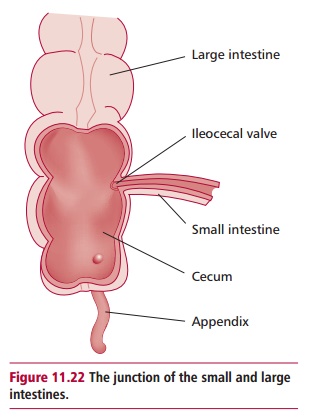Chapter: Biology of Disease: Disorders of the Gastrointestinal Tract, Pancreas, Liver and Gall Bladder
Activities of the Large Intestine
ACTIVITIES OF THE LARGE INTESTINE
The large intestine is so named because its diameter is greater
than that of the small intestine though it is, in fact, much the shorter of the
two. Fluid, con-taining the unabsorbed products of digestion, directly enters
from the small intestine at a junction that is also the site of the vestigial
cecum and appen-dix (Figure 11.22).
Absorption of Na+ and water occurs over the surface of the large
intestine, which also acts as a reservoir for material resistant to diges-tion
by GIT enzymes. However, bacterial action on this material releases some
nutrients from food, for example certain vitamins as well as about 200–2000 cm3
of gas in 10–14 episodes per day. The final waste together with bacteria forms
the feces, which passes to the last section of the GIT, the rectum, and is
eliminated through the anus. Two sphincter muscles control elimination: the
first of smooth muscle opens involuntarily in response to pressure within the
rectum; the second is controlled voluntarily and allows for a conscious
deci-sion to defecate.

Related Topics